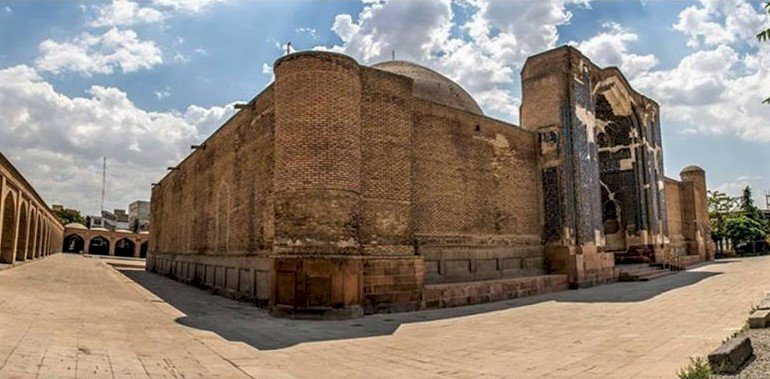INSUBCONTINENT EXCLUSIVE:
Hamzehzadeh said.Completed in the mid-15th century, the Blue Mosque of Tabriz (better known as Masjed-e Kabud) was among the most glorious
nicknamed.The Blue Mosque was once part of a complex known as the ''Muzaffariya',' which included a tomb, cistern, library, and khanqah
The function of the remaining building itself in a state of ruin has not been definitively identified
surfaces were once covered in a variety of tile revetments; remains of tile mosaic, underglaze-painted and overglaze-painted tiles, and
luster tiles attest to the richness of the decorative scheme
Patterns are rendered in subtle colors with extensive use of cobalt blue as a ground for inscriptions and arabesque designs in gold and
The dome was a deep blue, stenciled with gold patterns.According to Archnet, its plan, which is unique in Iran, comprises a central square
chamber covered by a dome and framed on three sides by a continuous arcade of nine domed bays
A domed sanctuary project from the fourth, the qibla side
The plan bears comparison to the covered Ottoman mosques of Bursa and Byzantine church architecture.On the exterior walls of the Blue Mosque
are many interesting under-glaze tiles, which are adorned with a black line and painted in white on a dark blue ground
Most of these are square blue-and-white tiles with floral or geometric ornaments.Extensive rebuilding took place between 1950 and 1966
The dome over the central chamber dates from this period, as do the undecorated interior walls

